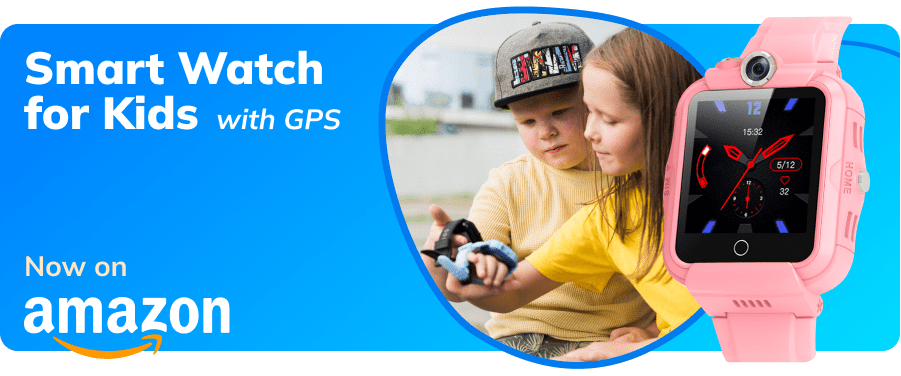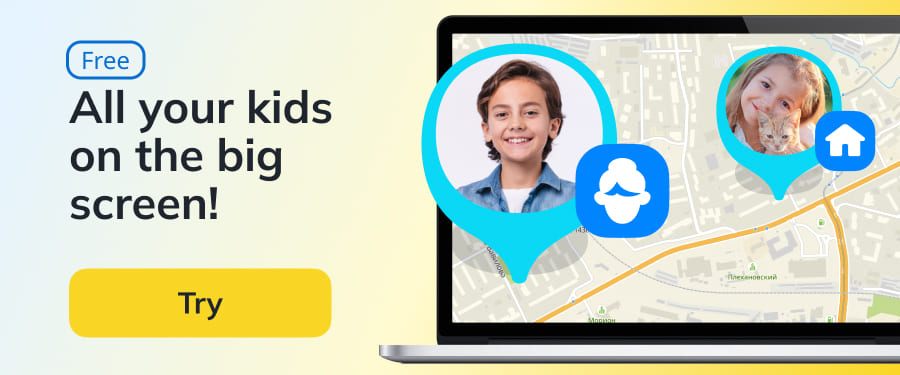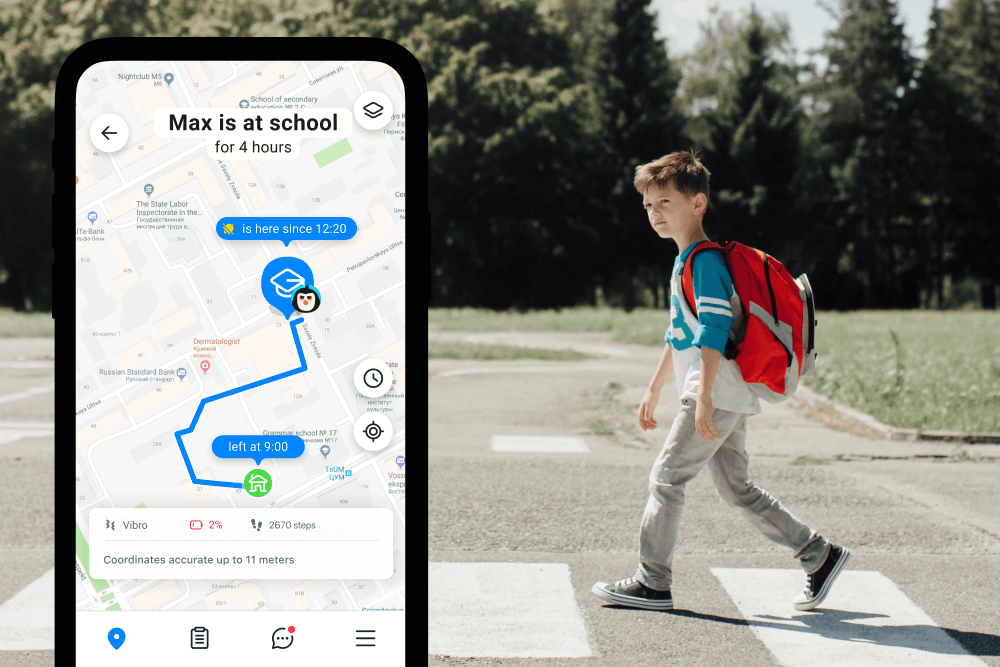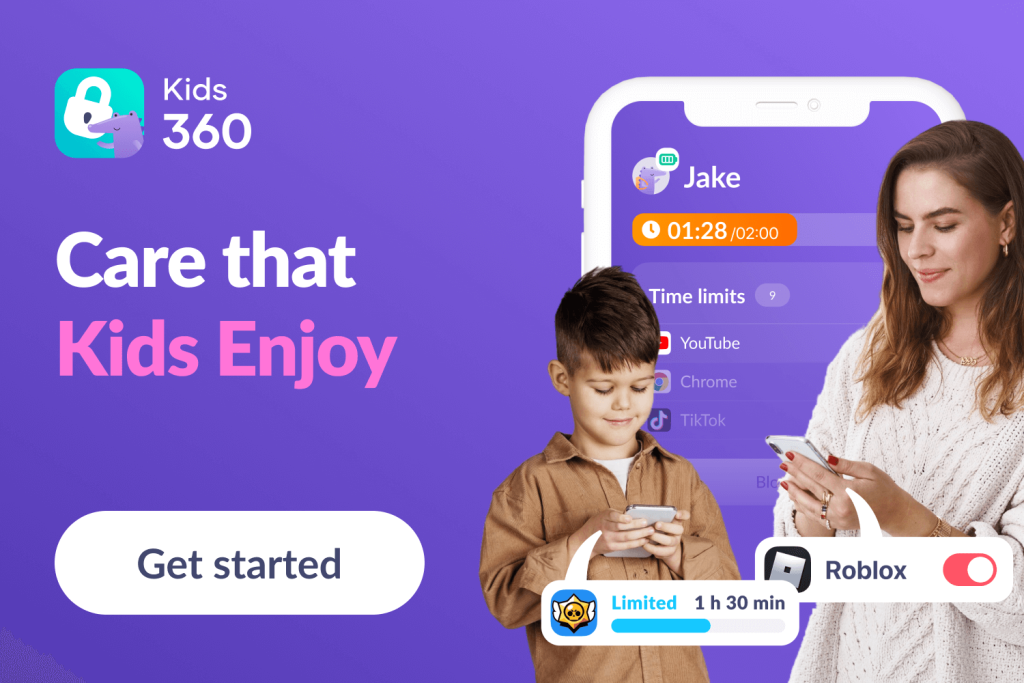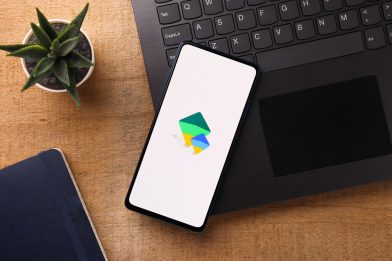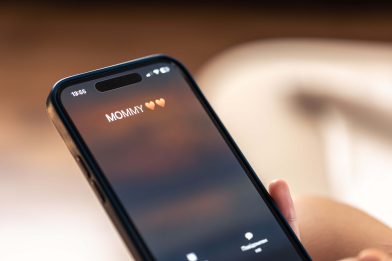Can You Track an iPhone with an Android? Yes—Here’s How
If you’ve found yourself Googling how to track an iPhone with Android, you’re not alone.
While Apple and Android devices don’t always play nice together, there are practical solutions for parents determined to stay connected with their kids.
So what are these practical solutions? Let’s take a closer look.
Contents:
- Built-in Solutions: Why Apple’s Find My Isn’t Enough for Android Users
- How to Track iPhone from Android: Top Methods in 2025
- Privacy and Ethical Considerations for Tracking Children’s Phones
- FAQs
Built-in Solutions: Why Apple’s Find My Isn’t Enough for Android Users
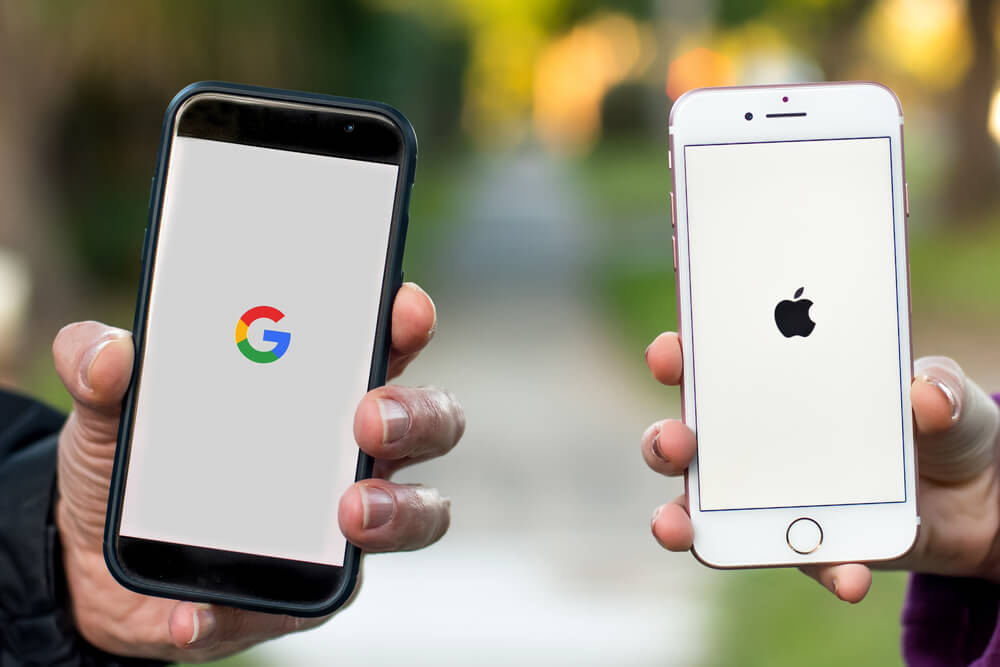
Daria Nipot/Shutterstock
Apple’s Find My iPhone is a handy feature that allows users to locate their Apple devices quickly and easily. It’s built into iPhones and works through Apple’s interconnected ecosystem.
Whenever a device is lost—or in the case of concerned parents, whenever you need to check on your child’s location—you can log in to your iCloud account via Find My to track it in real-time.
It sounds convenient, right? But here’s the catch for Android users (as well as users of devices like the Samsung Galaxy S23)—it was designed with Apple-only environments in mind, and that can be a big problem.
Understanding the Limitations of Native Apple Tracking for Android Users
Here’s where the frustration begins: first, there’s no official Find My app for Android. While you can access iCloud through a mobile browser on an Android device, the experience is clunky and certainly not designed with non-Apple users in mind.
Then there are login restrictions. Each session often requires you to authenticate your access, adding unnecessary steps when what you really need is quick availability. Some parents also report issues with receiving timely notifications, which defeats the point if you’re relying on these updates in emergencies.
Accuracy can be another sticking point. Apple’s Find My is optimized for Apple-to-Apple communication, which means location tracking for Android users can lag or be less reliable. This setup may be fine for occasional use, but if you’re a parent wanting ongoing peace of mind, the drawbacks quickly add up.
For Android parents with iPhone kids, the lack of compatibility isn’t just frustrating—it’s inefficient. You need seamless, real-time tracking options without hiccups like login delays or questionable GPS accuracy.
Thankfully, there are tools designed to offer exactly that seamless experience, which brings us to your best bets for cross-platform parental tracking in 2025.
How to Track iPhone from Android: Top Methods in 2025
If you’re navigating the Apple-Android divide, don’t worry. These tools can help.
Method 1: Using Findmykids
Findmykids is one of the most dependable GPS tracking apps on the market, and its cross-platform functionality makes it perfect for families balancing both Apple and Android devices.
You install the app on both your device and your child’s phone, set up permissions, and voilà—you can now see where they are at any given time.
Besides live updates, it includes geofencing features. Geofencing lets you draw “virtual boundaries” around key real-time locations like home, school, or extracurricular activities. If your child leaves or enters these areas, the app instantly alerts you.
The setup process is impressively straightforward. Start by downloading the app on your Android device, then guide your child through installing and connecting their iPhone. The app’s interface walks you through pairing the devices and setting permissions, so you can be up and running in just a few minutes.
The best part? The app doesn’t overwhelm you with choices or complex settings, making it a practical option even for parents who wouldn’t call themselves “tech-savvy.”
No matter the device, Findmykids keeps you connected with real-time location updates. Try it today!
Method 2: Using Google Maps Location Sharing
PST Vector/Shutterstock
If you’re not interested in third-party apps, Google Maps provides a built-in option for location sharing. It’s one of Google’s many convenient built-in programs, like Google Photos or Google Wallet, and can be found through the Google Play Store.
Since Google Maps is widely used and available on both iOS (including iOS 15) and Android, it’s a cost-effective and readily available alternative.
To get started, you’ll need your child’s iPhone and their Google® account details. Here’s how to set it up:
- Open Google Maps on your child’s iPhone.
- Tap on their profile picture or initials in the top-right corner to access Settings.
- Select “Location Sharing” from the menu.
- Tap “Share Location” and choose how long you want to share their location (e.g., indefinitely or for a specific time frame).
- Add your Android device to the list of shared contacts.
Once you’ve completed these steps, their real-time location will appear on your Google Maps app anytime you want to check in.
If you already use Google Maps daily, it feels natural to integrate location sharing. There’s also no additional cost, which makes it a budget-friendly solution.
However, this method isn’t without its flaws. Notifications are less customizable than what you’d get with apps like Findmykids. Geofencing isn’t an option either, and while it works well enough for general location updates, it lacks some of the parental control features that dedicated tracking apps offer.
Still, for parents looking for a free and straightforward way to stay connected, Google Maps can get the job done.
Method 3: Family Sharing and iCloud Web
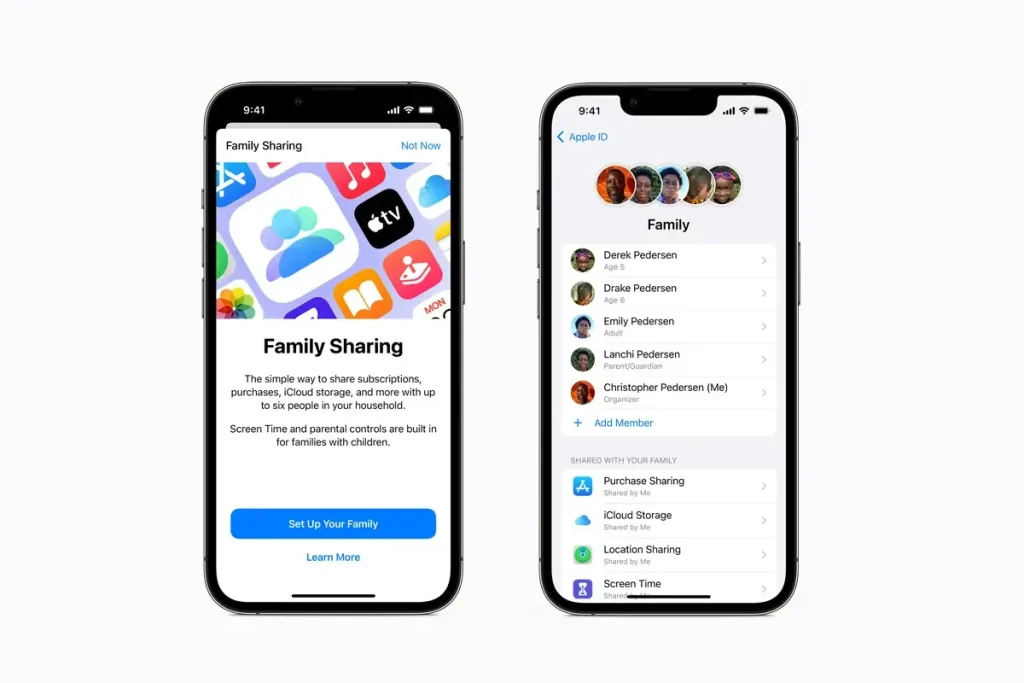
Credit: apple.com
Family Share is one of Apple Support’s built-in solutions for managing and monitoring devices within a family. It works seamlessly when everyone is in the Apple ecosystem.
For example, you can track a child’s iPhone using Find My from your own Apple device. But when you’re pairing an iPhone with an Android device, it introduces some limitations.
To track an iPhone with an Android device using these methods, you’ll need the child’s Apple ID or access to their iCloud account through a web browser. Here are the steps to do this:
- Open a web browser (like Chrome or Firefox) on your Android device.
- Head to the iCloud website and sign in using the child’s Apple ID.
- Go to the Find My iPhone section, which shows all devices linked to the Apple ID account (Apple account).
- Select the iPhone, and you’ll see real-time locations on the map.
If Family Sharing is already set up, you can also track the iPhone through connected Family Sharing accounts.
While these steps seem pretty straightforward, here’s what might trip you up:
- Web Browsers Aren’t Perfect: Using iCloud on web browsers isn’t optimized for Android. Navigation can feel clunky, and real-time location updates may lag.
- Login Issues: You’ll often need to go through two-factor authentication (especially if you’re not regularly signed into iCloud). This can be a hassle, particularly in an emergency.
- No App Integration: Unlike Apple devices that can use the Find My app, Android options are restricted to browser access, which lacks features like automatic alerts or geofencing.
- Device Compatibility: Family Sharing’s deeper functionalities—like automatic notifications or managing screen time—are exclusive to Apple hardware.
Overall, while this method works, it’s clearly not designed with Android users in mind. You might be able to check real-time locations in a pinch, but if you need more comprehensive monitoring to add to your timeline, other options are a better fit.
Method 4: Third-Party Parental Control Apps
If the limitations of Family Sharing are a deal-breaker, third-party apps are worth considering. These apps are specifically designed to work across both Apple and Android devices, making them ideal for families that mix and match tech brands.
Here are some of the best options available in the App Store and Google Play Store in 2025:
- Kids360: a family tracking app designed for cross-platform use. It provides real-time location monitoring, location history, and alerts. What sets Kids360 apart is its combination of screen time management and motivational features. Parents can set daily screen limits, schedule “no phone” periods (like during homework or bedtime), and even block certain apps or categories. Kids360 also includes a built-in reward system—children can earn extra screen time by completing tasks or challenges, which makes boundaries feel more collaborative and less restrictive. While it’s easy to use and visually appealing for both parents and kids, some users report occasional delays in location updates and issues with app blocking on certain devices. Still, for families looking for a balance between oversight and positive habits, Kids360 is a strong all-in-one option.
- Family Locator by Life360: This app combines GPS tracking with alerts and even crash detection. It works seamlessly regardless of the device your child uses.
- Google Family Link: Although Google Family Link focuses on Android devices, it can still track iPhones when paired with a Google account.
- Qustodio: Known for its parental control features, Qustodio allows both Android parents and iPhone kids to stay connected. It supports location tracking and screen time management.
When picking a phone-tracking app, consider what matters most—features like geofencing, real-time location updates, or detailed location history. Most apps offer free versions, so you can test them before committing to a subscription.
Privacy and Ethical Considerations for Tracking Children’s Phones
Tracking your child’s phone can feel like a blurry line between safety and control. Technology makes tracking easier, but it also comes with responsibilities.
Keep Open Communication
Be clear and upfront with your child about why you’re tracking their phone and how you’ll use the information. Many apps, like Findmykids, notify your child when they’re being tracked, which builds transparency.
Focus on Safety
The goal is peace of mind, not surveillance. Restrict location tracking to situations where it’s genuinely helpful, like when your child is out alone or traveling between school and home.
Protect Their Privacy
Make sure the app you use offers strong privacy protections. Look for features that encrypt data and prevent unauthorized access. Double-check permissions before enabling location tracking on any device.
Think Long-Term
If your child is younger, you might rely heavily on location services, but as they grow older, tracking needs tend to decrease. Be flexible and adapt your approach based on their age and level of independence.
Read also: How to Negotiate With Your Child About Tracking Their Location?
Finding the Right Solution for Your Family
Each tracking method has its pros and cons, but what works best depends entirely on your family’s needs.
Now you’re fully equipped to track an iPhone from your Android device in 2025. Whether through built-in tools, third-party apps, or creative workarounds, the right solution makes all the difference.
FAQs
carballo/Shutterstock.com
Can iPhone and Android track each other?
Yes, but it often requires workarounds or third-party apps. First-party solutions like Apple’s Find My option aren’t designed for Android compatibility, but you can use browser-based access or cross-platform tracking apps.
Can I locate my iPhone using Google?
If your iPhone is signed into a Google account and has Google Maps installed, you can enable Location Sharing to track it via your Android device. Otherwise, Apple users rely on iCloud Find My iPhone.
Is there a tracker that works with Android and iPhone?
Yes, apps like Findmykids, Life360, and Qustodio support Android and iPhone integration. They allow tracking regardless of the device combination.
How to monitor a child’s iPhone from Android?
You can use apps like Kids360 or Google Family Link. For free alternatives, enable Google Maps Timeline or use browser-based access to iCloud’s Find My Device.
Is Findmykids safe and reliable?
Yes. Findmykids prioritizes safety by encrypting data, managing permissions, and notifying kids when they’re being tracked. It’s designed to provide reliable real-time location monitoring and alerts.
How accurate is location tracking across platforms?
Whether you’re using lost mode or a third-party app, the accuracy of these tools to find devices depends on factors like the app used, the strength of the Internet connection, and the device’s location services. Most apps offer precise tracking within a few feet when all conditions are optimal.
What if my child disables location services?
If location services are disabled, tracking won’t work as the phone can’t send the last location. Apps like Findmykids often send you alerts when this happens, so you can check in and ensure safety.
Cover image: incrediblephoto/Shutterstock
Проверьте электронный ящик

